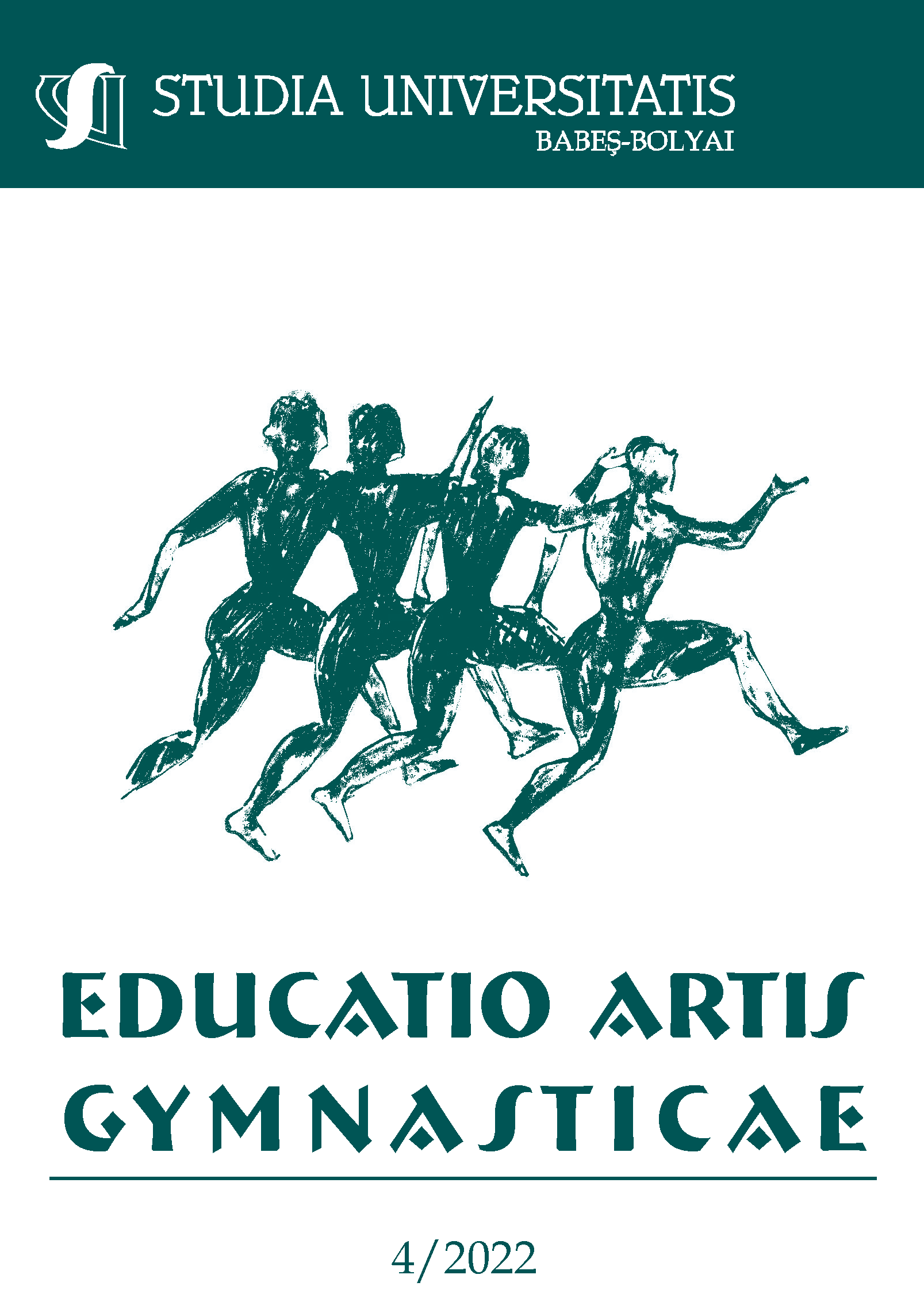STUDY ON THE RELATIONSHIP BETWEEN GENDER AND ANXIETY IN TEAM SPORTS GAMES
DOI:
https://doi.org/10.24193/subbeag.67(4).35Keywords:
competitive state anxiety, cognitive anxiety, somatic anxietyAbstract
This study aimed to identify possible differences in competitive anxiety and whether there is gender variability. Methods: The study included a total of 118 female and male athletes aged 13-24 years from 3 sports: 62 football athletes (16-female; 46-male), 33 basketball athletes (16-female; 17-male) and 23 volleyball athletes (15-female; 8-male). All 3 groups were subjected to an assessment aimed at state anxiety. The following questionnaire was used for this assessment: Questionnaire for the identification of competitive state anxiety. Hypothesis: There are statistically significant differences in anxiety levels (cognitive and somatic) between athletes in the three sports involved in the research (football, basketball and volleyball). This study’s results show statistically significant differences in competitive state anxiety among the study group, both genders and between the three categories of athletes (football, basketball, volleyball). Male subjects in this study tend to score higher to lower on competitive anxiety, compared to female subjects. Football players have lower levels of competitive state anxiety. Conclusions: There are differences in anxiety levels (cognitive and somatic).
References
Cashmore, E. (2008). Sport and Exercise Psychology: The Key Concepts. London and New York: Routledge, Taylor and Francis Group, p. 35.
Correia, M., & Rosado, A. (2019). Anxiety in athletes: Gender and type of sport differences. International Journal of Psychological Research, 12(1), 9-17.
Cox, R. H., Martens, M. P., & Russell, W. D. (2003). Measuring anxiety in athletics: The revised competitive state anxiety inventory-2. Journal of Sport and Exercise Psychology, 25(4), 519-533.
Creswell, J. W. (2010). Mapping the developing landscape of mixed methods research. SAGE handbook of mixed methods in social & behavioral research, 2, 45-68.
Patel, D. R., Omar, H., & Terry, M. (2010). Sport-related performance anxiety in young female athletes. Journal of pediatric and adolescent gynecology, 23(6), 325-335.
Dosil J. (2006). Psychological interventions with football (soccer) teams: The sport psychologist’s handbook: A guide for sport-specific performance enhancement (Chichester, UK: John Wiley & Sons;), 139-158.
Kleine, Dietmar (1990). Anxiety and sport performance: A meta-analysis, Anxiety Research, 2:2, 113-131, Doi: 10.1080/08917779008249330.
Krane, V., & Williams, J. M. (1994). Cognitive anxiety, somatic anxiety, and confidence
in track and field athletes: The impact of gender, competitive level and task characteristics. International Journal of Sport Psychology.
Kusuma, D. W. Y., & Bin, W. (2017). Effect of yoga program on mental health: competitive anxiety in Semarang badminton athletes. KEMAS: Jurnal Kesehatan Masyarakat, 13(1), 121-130.
Gardner, F. L., & Moore. Z. E. (2004). A mindfulness acceptance-commitment-based approach to athletic performance enhancement: Theoretical considerations. Behavior Therapy, 35, 707-723.
Goldberg, L. R. (1992). The development of markers for the Big-Five factor structure. Psychological Assessment, 4, 26-42.
Grossbard, J. R., Smith, R. E., Smoll, F. L., & Cumming, S. P. (2009). Competitive anxiety in young athletes: Differentiating somatic anxiety, worry, and concentration disruption. Anxiety, Stress, & Coping, 22(2), 153-166.
Martens, R., Vealey, R. S., & Burton, D. (1990a). Competitive anxiety in sport. Champaign, IL: Human Kinetics.
Martens, R., Burton, D., Vealey, R.S., Bump, L.A., & Smith, D.E. (1990b). Development and validation of the Competitive State Anxiety Inventory-2 (CSAI-2). In R. Martens, R.S. Vealey, & D. Burton (Eds.), Competitive anxiety in sport (pp. 193-208). Champaign, IL: Human Kinetics.
Mellalieu, S. D., Hanton, S., & O’Brien, M. (2004). Intensity and direction of competitive anxiety as a function of sport type and experience. Scandinavian journal of medicine & science in sports, 14(5), 326-334.
Ntoumanis, N., & Biddle, S. J. (2000). Relationship of intensity and direction of competitive anxiety with coping strategies. The Sport Psychologist, 14(4), 360-371.
Raglin, J. S., & Hanin, Y. L. (2000). Competitive anxiety. Emotions in sport, 93-111.
Russell, W. D., Robb, M., & Cox, R. H. (1998). Sex, sport, situation, and competitive state anxiety. Perceptual and Motor Skills, 86(3), 816-818.
Thomas, O., Maynard, I., & Hanton, S. (2004). Temporal aspects of competitive anxiety and self-confidence as a function of anxiety perceptions. The Sport Psychologist, 18(2), 172-187.
Woodman, T. I. M., & Hardy, L. E. W. (2001). The relative impact of cognitive anxiety and self-confidence upon sport performance: A meta-analysis. Journal of sports sciences, 21(6), 443-457.
Downloads
Published
How to Cite
Issue
Section
License
Copyright (c) 2022 Studia Universitatis Babeș-Bolyai Educatio Artis Gymnasticae

This work is licensed under a Creative Commons Attribution-NonCommercial-NoDerivatives 4.0 International License.






